Sully Island: Tidal causeway rescues happening 'almost daily'
- Published
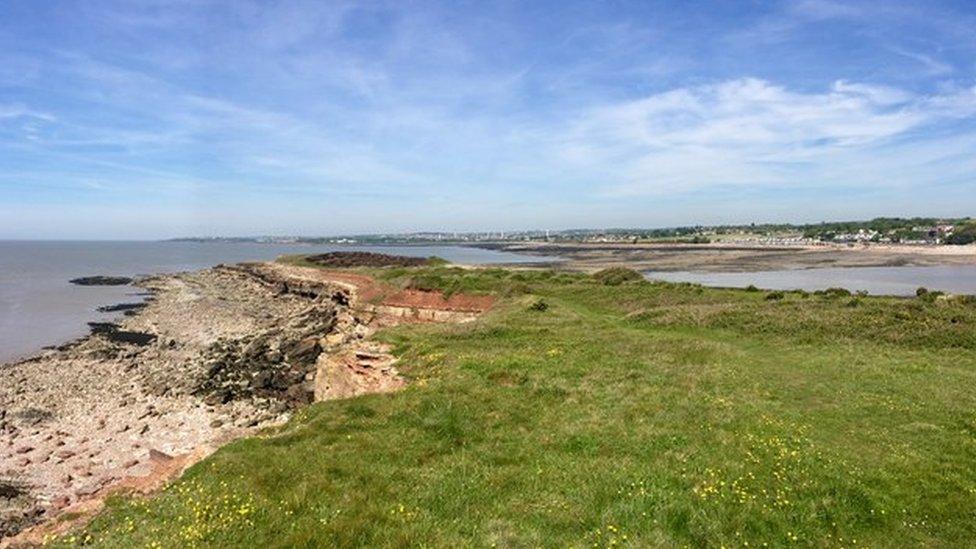
Sully Island is separated from the mainland by a causeway which is visible at low tide
Rescuing people who are struggling to cross a tidal causeway has become an "almost daily occurrence," a bar owner has said.
Stephen Fifield, who runs the Seashore Grill which looks towards Sully Island, Vale of Glamorgan, said he has helped "nine or 10" people cross this summer.
It comes after his friend, Richard Thomas, rescued a couple who were almost swept away by the current.
The RNLI urged people not to try to cross if they get cut off.
Mr Thomas was having drinks with his mother and two daughters at the end of May when he noticed the couple get into difficulty.
He said he ran downstairs and jumped through a window before heading out to help rescue the pair, with the help of the owner of a nearby caravan park.
"We were aware of two people trying to cross and we weren't sure they would make it," he added.
"We heard the female screaming so I jumped out of the window from the pub and the owner of the caravan site was stood knee-deep in water.
"She couldn't swim, the boyfriend was panicking and Gordon [the caravan site owner] was trying to hold on but had nowhere to take her."
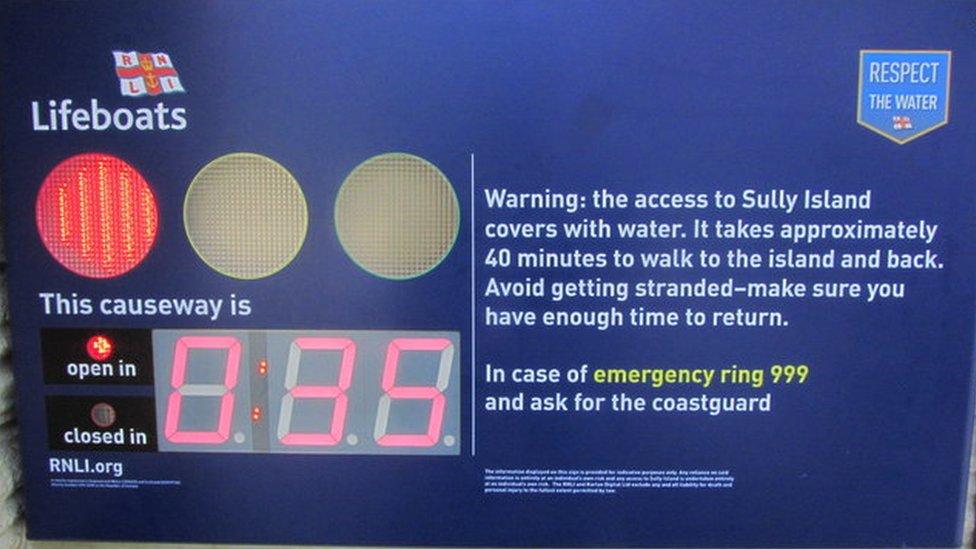
A traffic light system was introduced in 2014 to warn people not to cross at certain times
His daughter, Chloe Thomas, said it was "horrific".
"If dad and Gordon hadn't had gone in I don't know if the couple would be alive," she said.
"It was awful. It happens so often. My dad's best mate runs the Seashore Grill and it's not their responsibility. They've probably saved loads of lives by saying 'don't cross'."
Mr Fifield wants people to be aware of the dangers that come with crossing the causeway.
"It's almost a daily occurrence in summer," he said.
He said people sometimes missed the warning signs and were "oblivious" to the fact crossing may be too difficult if they do not return in time.
"They think it's safe. Once the water starts coming in from both sides it's very powerful or they'll slip, and once you hit the water it's the panic that kicks in."
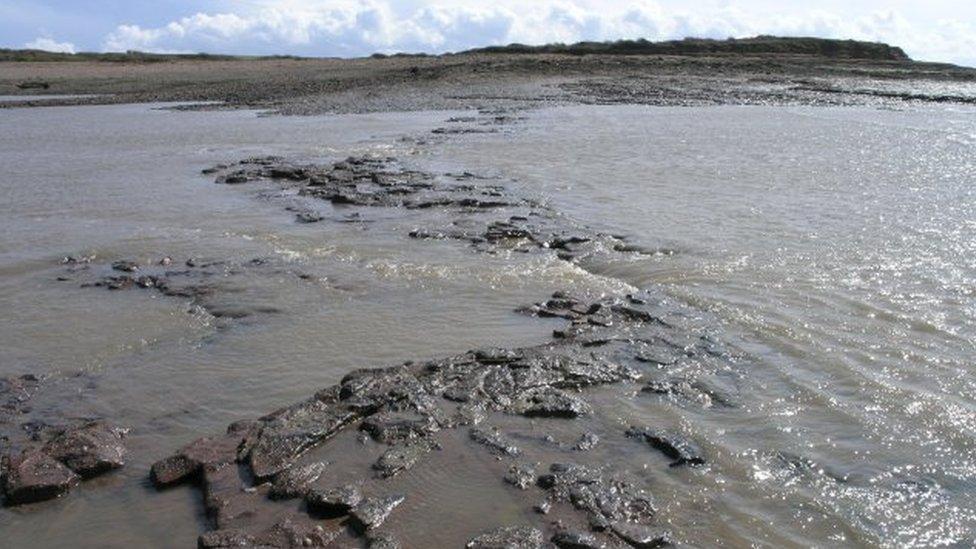
The causeway can be treacherous to cross
Mr Fifield often uses a loudhailer to warn people not to cross, and will venture out with ropes and life jackets to help people who get into difficulty.
He said: "I try to make sure I'm around. It doesn't take away from the fact that it shouldn't [be my responsibility].
"That's the frustrating part, because we shouldn't be thinking about it. We will, to save someone, but at some point that might go against us and we might be the ones getting swept away."
The island lies about 400m from the coast and it is possible to walk there at low tide, but this journey becomes treacherous when the tide comes in.
An RNLI traffic light system is in place on the mainland which tells people whether it is safe to cross.
But Chris Cousens, the RNLI's water safety lead for Wales, the west and the Isle of Man, said a lack of amenities, such as electricity, meant it was not possible to have the same on the island.
He said lifeboats attend "dozens" of rescues each year at Sully Island, adding: "It's more often than we would like and often the incidents are really preventable with a little bit of education or extra knowledge about tides.
"Most incidents happen when people attempt to come back from the island as the causeway is cutting off. It cuts off quicker than people think and they can very easily be swept away."
Vale of Glamorgan council said: "There is clear signage in place warning people of the dangers posed by the incoming tide when crossing the causeway.
"The council works with the RNLI to help keep people safe in this area, but as with any activity involving the open sea, visitors need to behave in a cautious and responsible fashion."
Related topics
- Published1 May 2021
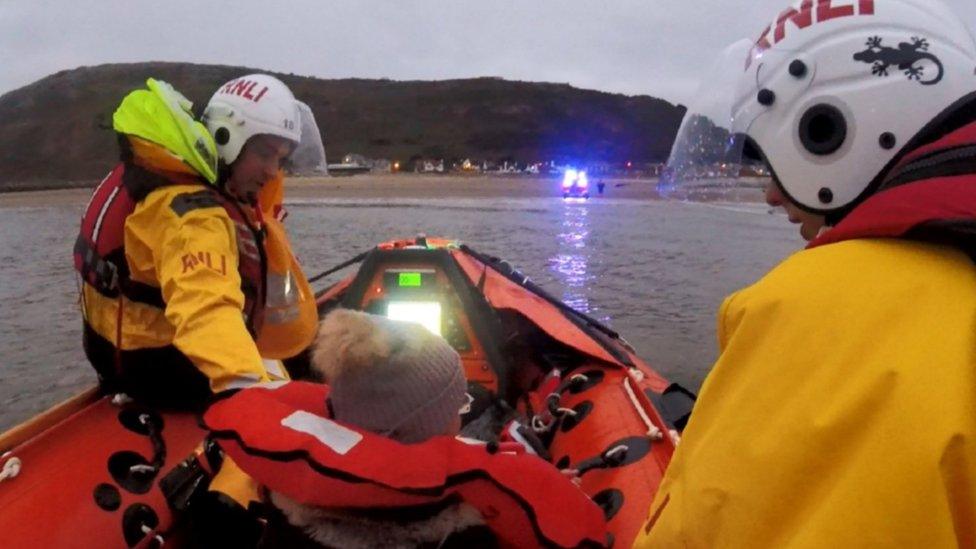
- Published29 May 2021
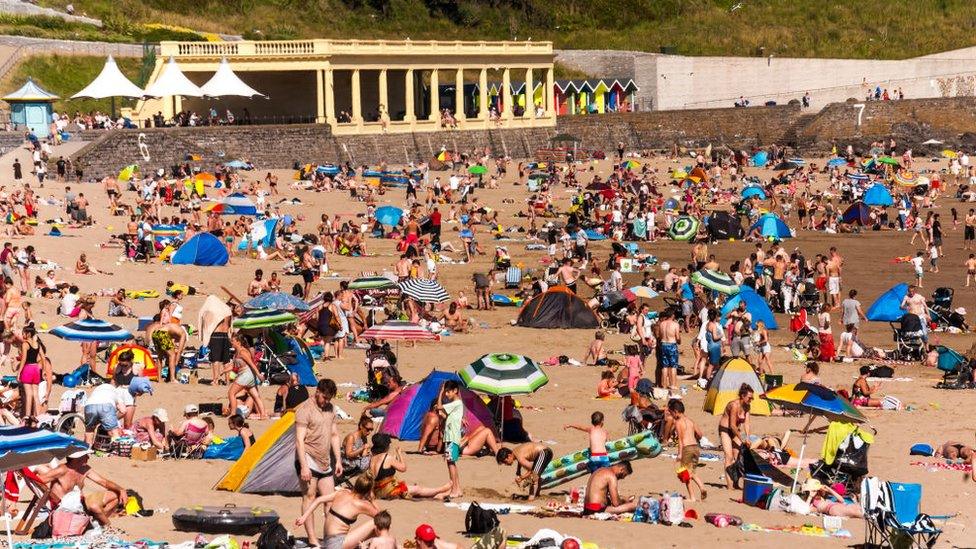
- Published18 June 2014
